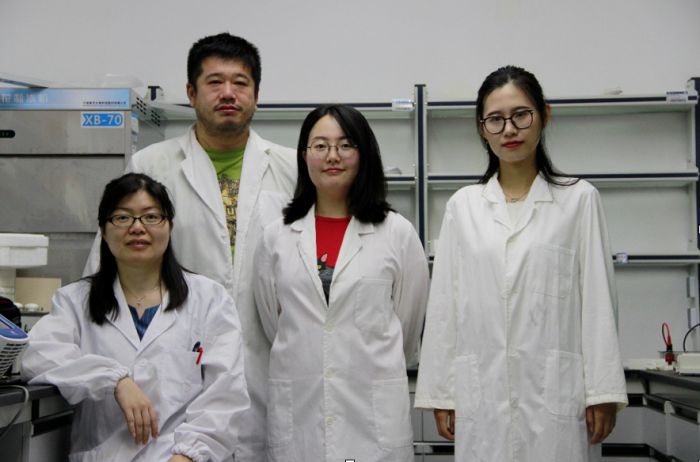
Lan Mi, Jiong Ma, Yueyue Jing and Xinyi Wang (left to right) developed a fast method for cancer detection.
A team of researchers headed by Lan Mi, Associate Professor from Department of Optical Science and Engineering of Fudan University has applied a label-free imaging and spectroscopy method to detect cervical cancer and precancer (cervical intraepithelial neoplasia, CIN). By investigating the native fluorescent metabolic coenzymes in unstained tissue samples, the metabolic changes in cells and tissues can be monitored, thus the alteration of the metabolic microenvironmentcan be served as biomarkers of cancer detection.
In collaboration with the doctors in Central Hospital of Wuhan, headed by Prof. Qinghua Zhang, they used native fluorescence imaging and spectroscopy to examine over 100 tissue samples taken from patients who underwent gynecological operation. The fluorescence spectra results were compared with postoperative pathological standard diagnoses. The sensitivity and specificity of the label-free method for cervical cancer/precancer diagnosis are determined as 100% and 91%.
In a paper published in the peer-reviewed journal Journal of Biophotonics, the authors reports the rapid, label-free, and cost-effective native fluorescence spectrum method for cervical cancer detection. “Besides the high correspondence with the traditional pathological analyses, we have found that this method is highly sensitive for the samples obtained from healthy sites of CIN/ cervical cancer patients.” says Lan Mi, “which means this method is more sensitive than traditional H&E stained imaging for diagnosing the precancer or the patients with small regions of lesion.” More remarkably, traditional stained histopathology process takes around one week, while this method takes approximately 2 minutes, which can dramatically save time.
Cervical cancer is the second most common female cancer worldwide, and early diagnosis can greatly improve the treatment. Therefore, the team hopes that this time-saving method can reduce complicated sample process work and detect the abnormal lesions earlier and faster.
“In principle, this method is also applicable to other cancer diseases.” Ms. Yueyue Jing, first author of the study, commented, “while the metabolic changes may be dependent on the type of cell lines, tissues or organs.”
In the future, the team intends to combine the miniaturized endoscopy with this label-free fluorescence spectroscopy method for clinical application of non-invasive screening.
Area of application: Oncology
Tags:
fluorescence, cancer, spectroscopy, endoscopy, detection, non-invasive, label free, cervical cancer
转自;https://www.biophotonics.world/magazine/article/619/label-free-techniques-for-early-detection-of-cancer

 复旦主页
复旦主页 实验室安全
实验室安全 复旦邮箱
复旦邮箱 办事大厅
办事大厅

